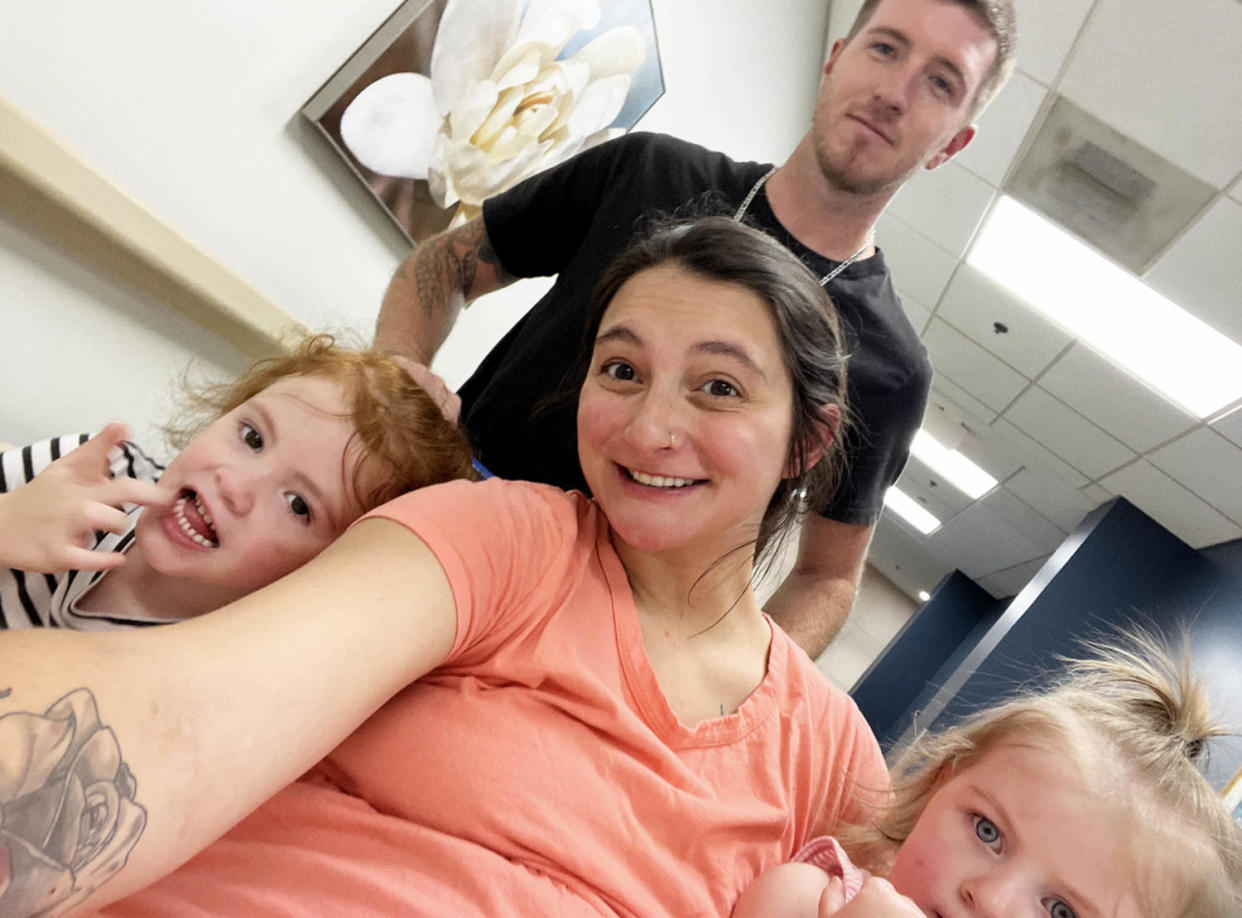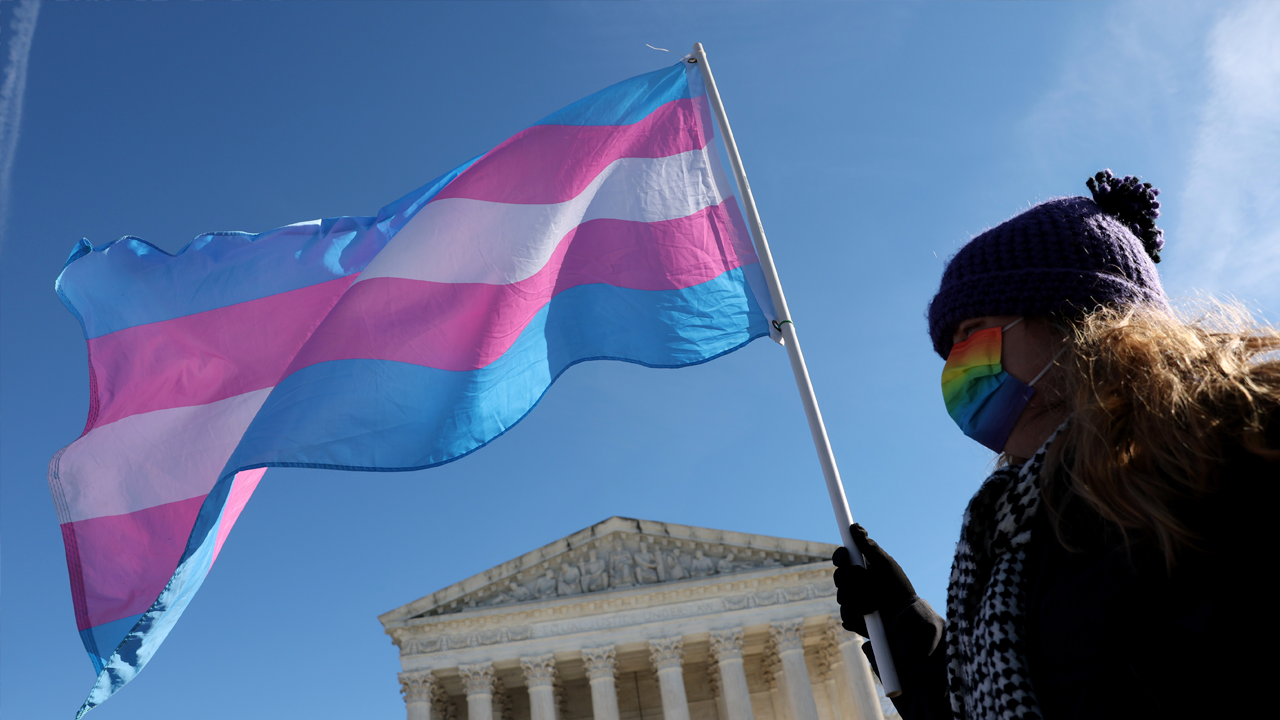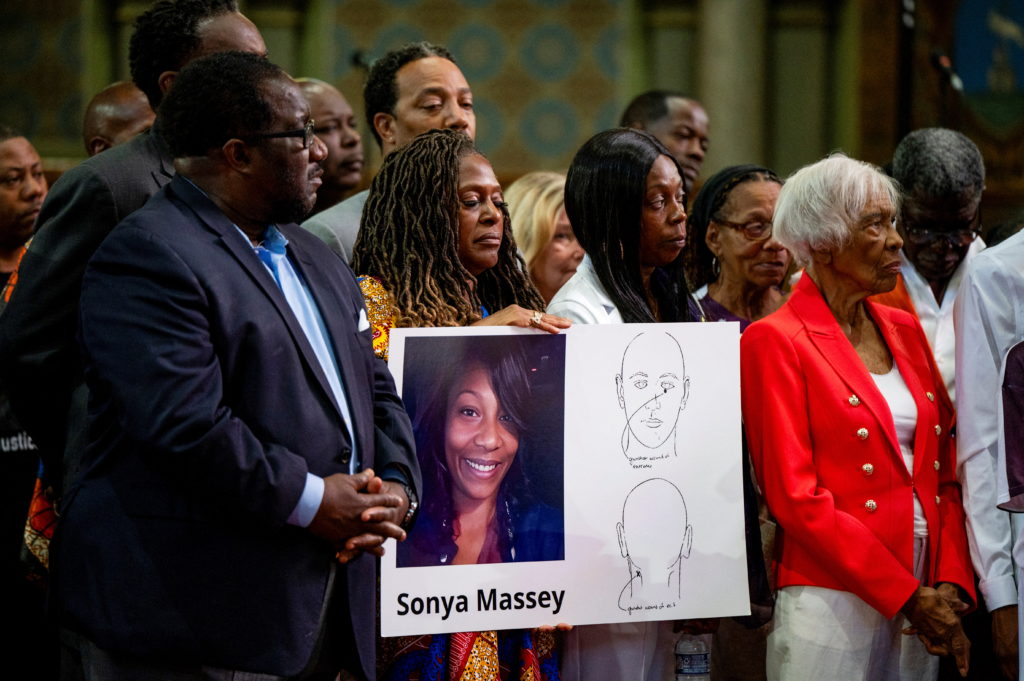Mississippi
This Mississippi mom thought she was having twins. It was quintuplets
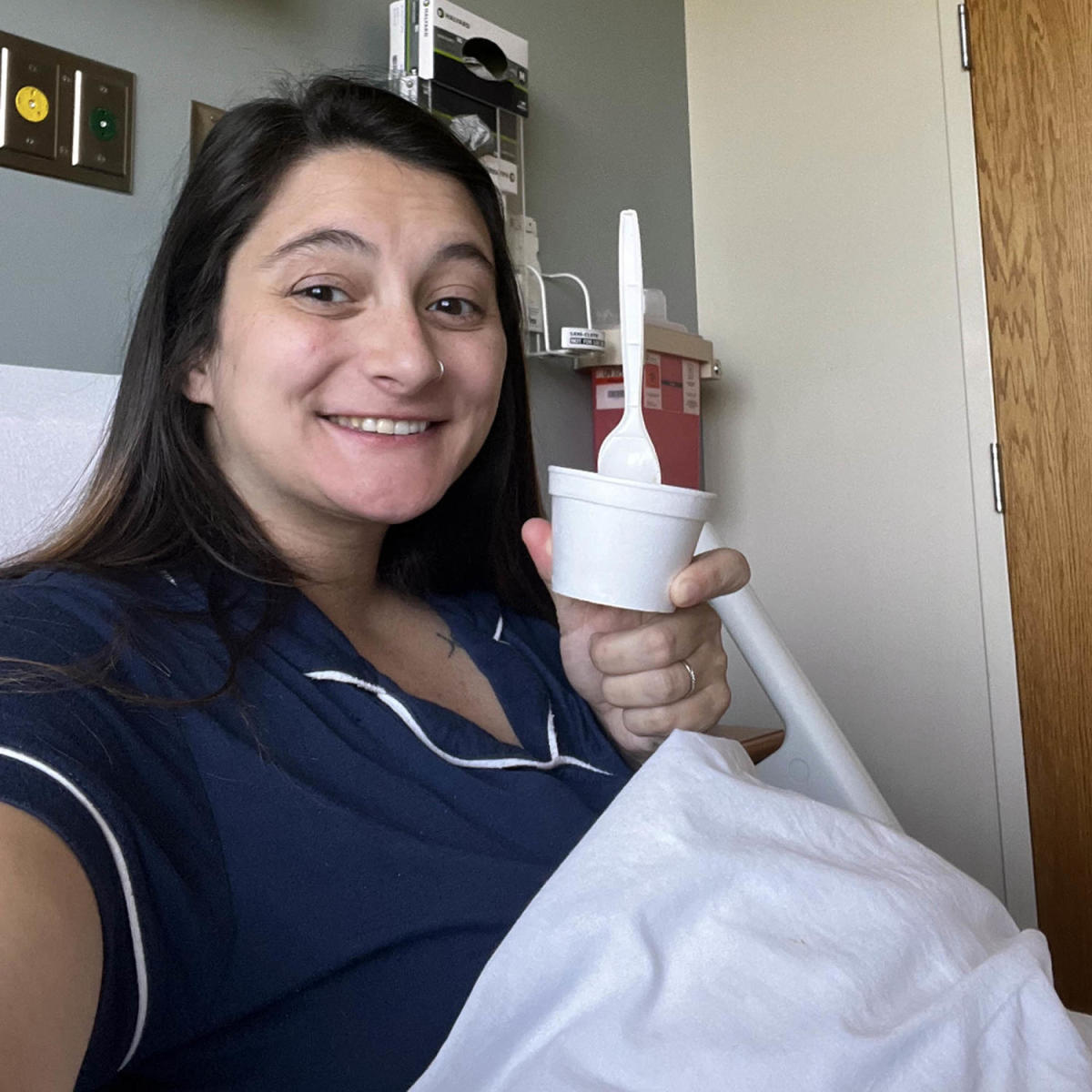
A couple in Laurel, Mississippi, got the shock of a lifetime when they found out they are expecting quintuplets.
Quintuplets occur in roughly one in 60 million births, according to Dr. Rachael Morris, an associate professor of maternal fetal medicine at the University of Mississippi Medical Center.
Ashley and Tyler Meyers already have two toddlers; soon they will have seven under age 3.
In January, Ashley Meyers was picking up cough syrup when she realized her period was a day late. The mom of daughters Paisleigh, 3, and Westlynn, 2, decided to throw a pregnancy test into her cart just to be safe, because some medications are harmful when taken during pregnancy.
“Not only was the test positive, the line was darker than I’ve ever seen in my life,” Ashley tells TODAY.com.
Ashley, 26, a phlebotomist, and her husband Tyler, 28, a mechanic, had just moved into a new home and were not trying for another child.
Her first look at the babies was a non-diagnostic ultrasound, also known as a “keepsake ultrasound,” at a non-medical facility.
Preliminary blood work had indicted they might have twins, so neither were shocked when two sacs appeared on the screen.
“My first thought was ‘OK. We can handle this,’” Ashley says, noting that Paisleigh and Westlynn are just 16 months apart.
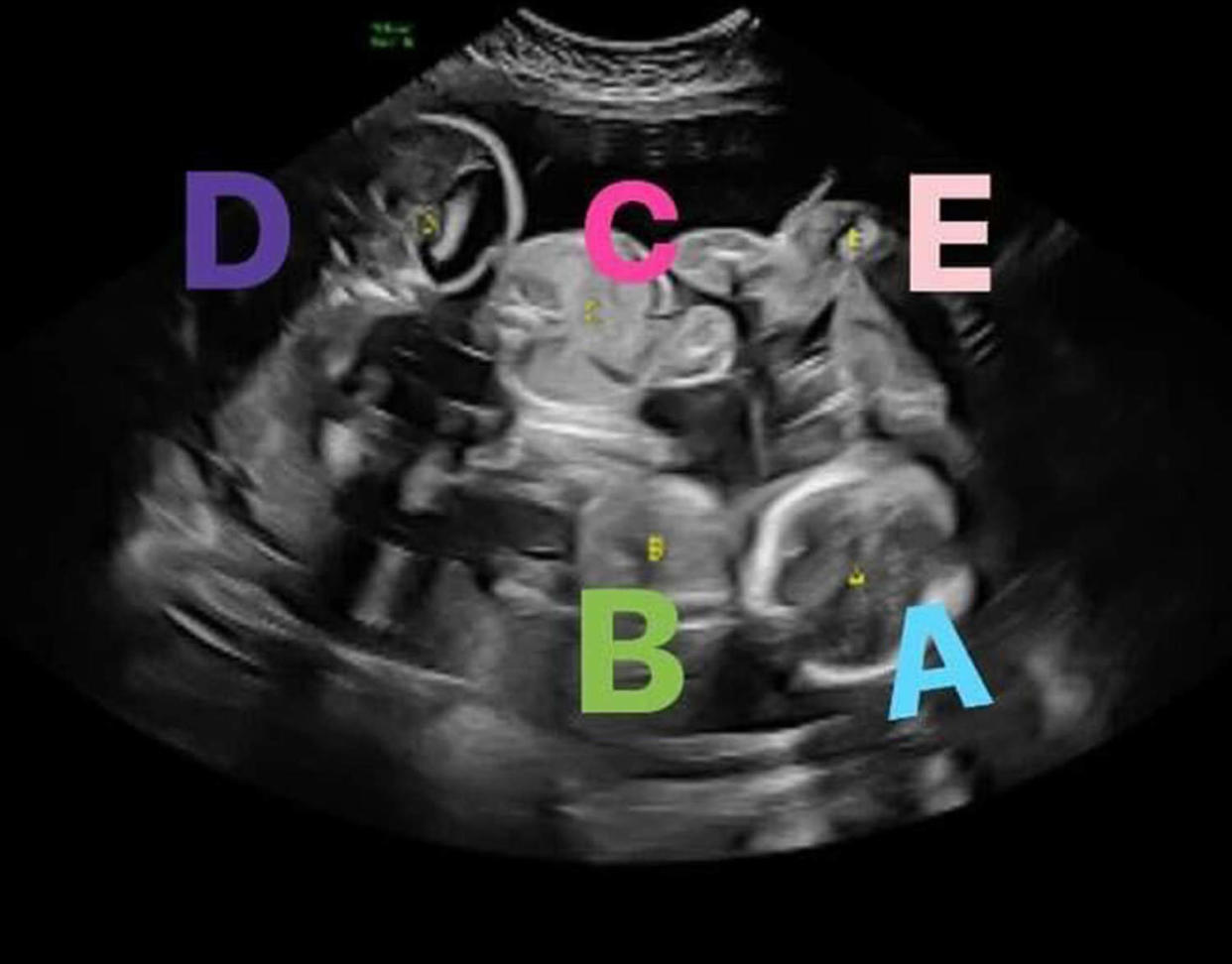
Two weeks later, Ashley’s OB-GYN introduced a major plot twist. The Meyers weren’t having twins — they were having quintuplets, two boys and three girls. Suddenly, “We can handle this” turned to sheer panic.
“I was in complete shock,” Meyers says. “I don’t think my husband and I talked to people for two weeks. We just went silent. Five is a lot of babies.”
“I was like, ‘How are we going to do this?’” Tyler, 28, tells TODAY.com. “But you just need to leave it up to God. He is not going to put you in a situation that you can’t handle.”
Quintuplets occur in roughly one in 60 million births, according to Dr. Rachael Morris, an associate professor of maternal fetal medicine at the University of Mississippi Medical Center.
Ashley is now 25 weeks along in her pregnancy and on bed rest at the University of Mississippi Medical Center in Jackson until she gives birth. Haylee and Shawn Ladner welcomed quintuplets at the same hospital in 2023. Tyler says the Ladners have been giving them “good pointers on what to expect.”
“My doctors are hoping we’ll make it to 34 weeks, because the longer they’re in, the better,” Meyers shares. “I’ve been coloring and watching some TV and catching up on all the stuff I haven’t been able to do because I worked full-time before this.”
Tyler, who is home holding down the fort, says he has a “whole new respect” for his wife.
“Taking care of little kids after a long day at work is harder than I thought it would be!” he says.
The Meyers family, who have a GoFundMe to help with medical expenses and baby essentials, have been inundated with support.
“I love our community,” Ashley says. “Complete strangers have blessed us with kindness. People have to come to help clean and wash dishes and get the rooms ready. When big stuff happens, we rally around each other. When everyone’s got your back it doesn’t feel so scary.”


Ashley also has the support of moms in the higher-order multiples community. Here is some of the advice they shared with TODAY:
-
“To Ashley and any mom expecting multiples, my number one advice is to make the best of the experience — especially the NICU journey, which is inevitable and often challenging when you have higher-order multiples. Schedule photoshoots, read them books, allow visitors, hold them as much as possible and make it a point to be as present and involved with their care as possible” Raquel Tolver (mom of 1-year-old quadruplets.)
-
“Believe in yourself. There will be days it feels too hard or you doubt if you can do this, but you were made for this” Ashley Crandell (mom of 2-year-old quadruplets.)
-
“Soak every second in —the highs and the lows — because while it is so unique and very crazy, it is your journey and it goes by so fast” Hanna Castle (mom of 2-year-old quadruplets)
-
“Best advice I can give is, “Don’t lose yourself, so that you can be the best for your babies. The second thing is find a system and organization that works for you and your babies and don’t be ashamed to take all the help you can get.” Heather Langley (mom of 3-year-old quintuplets.)
This article was originally published on TODAY.com

Mississippi
Lab monkeys on loose after Mississippi crash were disease-free, university says
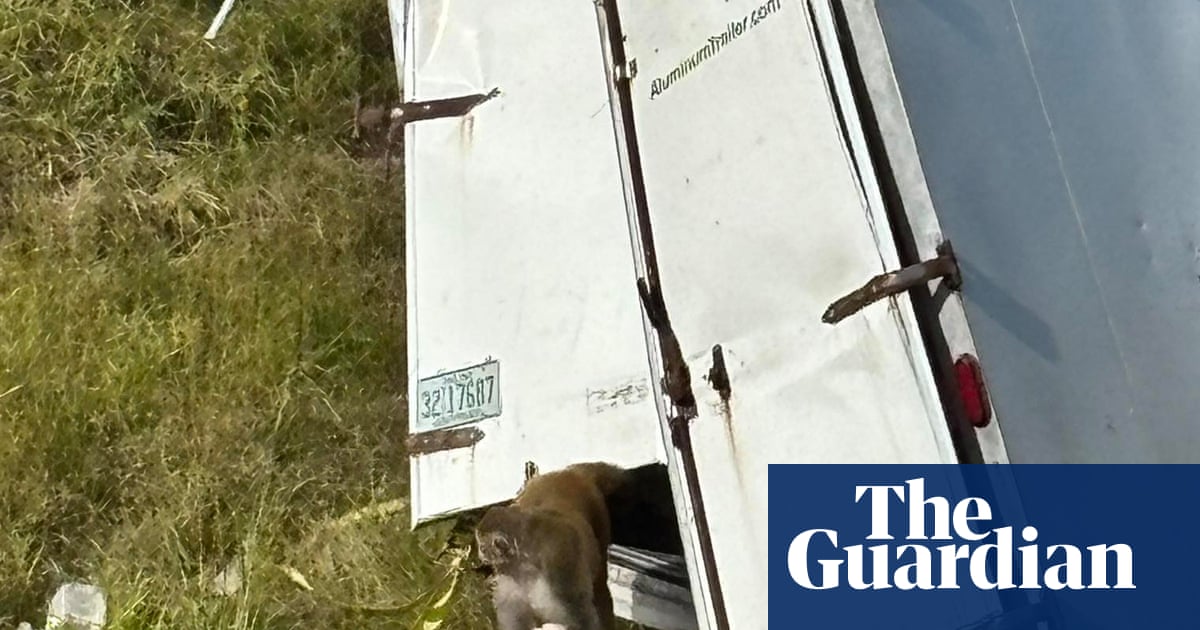
A group of monkeys being transported on a Mississippi highway that escaped captivity on Tuesday after the truck carrying them overturned did not carry a dangerous infectious disease, a university has said.
The truck was carrying rhesus monkeys, which typically weigh around 16lb (7.7kg) and are among the most medically studied animals on the planet.
Video shows monkeys crawling through tall grass on the side of Interstate 59 just north of Heidelberg, Mississippi, with wooden crates labeled “live animals” crumpled and strewn about.
The local sheriff’s department initially said the monkeys were carrying diseases including herpes, but Tulane University said in a statement that the monkeys “have not been exposed to any infectious agent”.
All but one of the escaped monkeys were killed, the Jasper county sheriff’s department said in a post on Facebook, warning that the monkeys were “aggressive”.
They were being housed at the Tulane University National Biomedical Research Center in New Orleans, Louisiana, which routinely provides primates to scientific research organizations, according to the university.
The crash happened about 100 miles (160km) from the state capital of Jackson. It was not clear what caused the truck to overturn.
The Associated Press contributed to this report
Mississippi
What oddsmakers predict will happen when Mississippi State faces Arkansas

Mississippi State’s hope of reaching six wins and going to a bowl game this season are on life support.
The Bulldogs have lost their last four games, all SEC games, and in heart-breaking fashion, too. Two of those losses were overtime games and another was lost on last minute interception.
Mississippi State needs a win, not just for its bowl game aspirations, but also to give the fanbase something to cheer about instead of calling for a coaching change.
“One, thank you for the support, the atmosphere and the energy. And Saturday was as good as it gets,” Bulldogs’ coach Jeff Lebby said Monday when asked about what his message to the upset fans. “You’ve all heard me talk about how much I appreciate our community and our connection and the passion, the love that people have for Mississippi State. I love that. That’s one of the greatest things about our university.
“I hate that (the fans are) not getting to enjoy (wins). My hope is that we have the ability to go take care of business and go get a tough, hard win on the road on Saturday. And then come back home to another great crowd.”
Fortunately, Mississippi State’s opponent this week represents the most winnable SEC game left on its schedule, even if Lebby won’t admit that’s what Arkansas is.
“No, not in the least bit,” Lebby said. “We’re playing the best two and six football team in the country this week. They’ve got a quarterback that is elite at everything that he does. They have played really well offensively. Auburn did a really good job defensively the other day, creating some turnovers. Arkansas struggled in the red zone a little bit.
“But their ability to score and play great offensively is very well documented. And then defensively, they’ve played better. They haven’t been great against the run, but they were better this past week.”
But that doesn’t change the fact the odds for the Bulldogs this week are the best they’ll be the rest of the season.
Odds via FanDuel Sportsbook
Spread
Mississippi State: +4.5 (-112)
Arkansas: -4.5 (-108)
Moneyline
Mississippi State: +158
Arkansas: -192
Total
Over: 67.5 (-110)
Under: 67.5 (-110)
Mississippi
Mississippi High School Football All-Classification Rankings: October 27, 2025

Another week of the 2025 Mississippi high school football season has come and gone, and High School On SI has all of the latest computer rankings for each classification as of October 27, 2025.
High School On SI’s formula was created using its own linear algebra-based ranking algorithm inspired by the Colley Bias-Free Ranking Method. Colley’s Method was created by Wes Colley, Ph.D., an astrophysicist at the University of Alabama at Huntsville. He devised his algorithm in order to help address the subjectivity and controversy regarding BCS college football selections in the 1990s and early 2000s, using a method that used no subjective variables.
Which teams took the top spot in each division? Here are High School On SI’s latest Mississippi high school football computer rankings, as of October 27, 2025:
1. Calhoun City (7-1)
2. Simmons (7-0)
3. Biggersville (7-2)
4. Stringer (7-2)
5. Nanih Waiya (6-2)
6. Leflore County (6-3)
7. South Delta (7-2)
8. Taylorsville (5-4)
9. Noxapater (5-4)
10. West Tallahatchie (6-2)
11. Bogue Chitto (6-3)
12. Salem (6-2)
13. Ethel (6-3)
14. West Lowndes (4-3)
15. Leake County (4-5)
16. Lumberton (4-4)
17. Byers (5-3)
18. Richton (4-5)
19. Tupelo Christian Prep (5-4)
20. Sebastopol (3-6)
21. Okolona (3-7)
22. Potts Camp (3-4)
23. Shaw (1-6)
24. Falkner (3-5)
25. Vardaman (2-7)
View full Class 1A rankings
1. Wesson (9-0)
2. Baldwyn (8-1)
3. East Webster (8-1)
4. Charleston (5-2)
5. Heidelberg (5-2)
6. Clarkdale (7-2)
7. Bay Springs (6-2)
8. Water Valley (7-2)
9. Loyd Star (8-1)
10. North Side (7-1)
11. Lake (6-3)
12. Myrtle (7-2)
13. Hamilton (6-3)
14. Eupora (6-3)
15. Amite County (6-2)
16. Hatley (6-2)
17. Kemper County (3-4)
18. Mize (3-6)
19. Bruce (6-3)
20. Velma Jackson (4-5)
21. East Marion (4-4)
22. North Forrest (4-5)
23. Enterprise Clarke (2-7)
24. Philadelphia (1-7)
25. Collins (3-5)
View full Class 2A rankings
1. Union (9-0)
2. Raleigh (8-1)
3. Noxubee County (6-3)
4. Kossuth (6-2)
5. West Marion (6-3)
6. Choctaw County (5-4)
7. Magee (6-2)
8. Hazlehurst (4-3)
9. Presbyterian Christian (6-3)
10. Tylertown (6-3)
11. Quitman (5-4)
12. Aberdeen (5-4)
13. Winona (4-4)
14. Belmont (6-3)
15. Seminary (4-5)
16. Yazoo County (5-3)
17. Humphreys County (5-4)
18. Booneville (4-5)
19. North Panola (4-4)
20. Jefferson Davis County (3-5)
21. O’Bannon (5-3)
22. Coahoma County (3-5)
23. Franklin County (4-5)
24. Independence (4-4)
25. Thomas E. Edwards (4-4)
View full Class 3A rankings
1. Columbia (9-0)
2. Senatobia (8-1)
3. Kosciusko (8-1)
4. Louisville (6-2)
5. Clarksdale (6-1)
6. McComb (7-1)
7. North Pontotoc (7-1)
8. Leake Central (7-2)
9. New Albany (7-2)
10. Rosa Fort (6-1)
11. Pass Christian (8-1)
12. Forest (7-2)
13. Corinth (6-2)
14. Itawamba Agricultural (6-2)
15. Poplarville (5-3)
16. Choctaw Central (6-2)
17. Morton (5-3)
18. Greenwood (6-3)
19. Shannon (6-3)
20. Newton County (5-4)
21. West Lauderdale (4-4)
22. Mendenhall (4-4)
23. Greene County (6-3)
24. Forrest County Agricultural (5-3)
25. Richland (5-4)
View full Class 4A rankings
1. West Point (8-0)
2. Brookhaven (6-2)
3. New Hope (6-2)
4. Lanier (9-0)
5. South Jones (7-2)
6. Sumrall (6-3)
7. Holmes County Central (6-3)
8. Cleveland Central (4-3)
9. Lafayette (4-4)
10. Purvis (5-3)
11. Vicksburg (5-3)
12. Stone (5-3)
13. Pontotoc (4-4)
14. Northeast Jones (4-4)
15. Laurel (2-6)
16. Florence (3-5)
17. Natchez (3-5)
18. Vancleave (3-5)
19. Wayne County (2-6)
20. North Pike (1-7)
21. Provine (2-7)
22. East Central (1-7)
23. Caledonia (1-7)
24. Columbus (1-7)
View full Class 5A rankings
1. Picayune (7-1)
2. Warren Central (6-2)
3. Ridgeland (7-1)
4. South Panola (5-3)
5. Grenada (6-2)
6. West Jones (7-2)
7. Lake Cormorant (6-2)
8. Terry (7-1)
9. Hattiesburg (6-2)
10. Callaway (5-4)
11. Center Hill (4-4)
12. Neshoba Central (4-4)
13. Pearl River Central (4-3)
14. Greenville (4-4)
15. Pascagoula (3-5)
16. Saltillo (3-6)
17. Canton (3-5)
18. Hancock (3-5)
19. George County (3-5)
20. Gautier (3-5)
21. Olive Branch (1-7)
22. Forest Hill (1-8)
23. Long Beach (1-7)
24. Jim Hill (1-8)
View full Class 6A rankings
1. Ocean Springs (7-1)
2. Tupelo (8-1)
3. Oxford (7-1)
4. Starkville (6-2)
5. D’Iberville (7-1)
6. Gulfport (6-2)
7. Petal (6-3)
8. Oak Grove (6-3)
9. Germantown (5-3)
10. West Harrison (6-3)
11. Hernando (6-2)
12. Horn Lake (5-3)
13. Northwest Rankin (5-3)
14. DeSoto Central (6-3)
15. St. Martin (6-3)
16. Clinton (4-4)
17. Madison Central (4-4)
18. Brandon (3-5)
19. Pearl (3-5)
20. Southaven (3-5)
21. Biloxi (2-6)
22. Meridian (2-6)
23. Lewisburg (2-6)
24. Harrison Central (1-7)
25. Murrah (1-8)
View full Class 7A rankings
-

 New York6 days ago
New York6 days agoVideo: How Mamdani Has Evolved in the Mayoral Race
-

 World1 week ago
World1 week agoIsrael continues deadly Gaza truce breaches as US seeks to strengthen deal
-

 News1 week ago
News1 week agoVideo: Federal Agents Detain Man During New York City Raid
-

 News1 week ago
News1 week agoBooks about race and gender to be returned to school libraries on some military bases
-

 Technology1 week ago
Technology1 week agoAI girlfriend apps leak millions of private chats
-

 Politics1 week ago
Politics1 week agoTrump admin on pace to shatter deportation record by end of first year: ‘Just the beginning’
-

 News1 week ago
News1 week agoTrump news at a glance: president can send national guard to Portland, for now
-

 Business1 week ago
Business1 week agoUnionized baristas want Olympics to drop Starbucks as its ‘official coffee partner’

